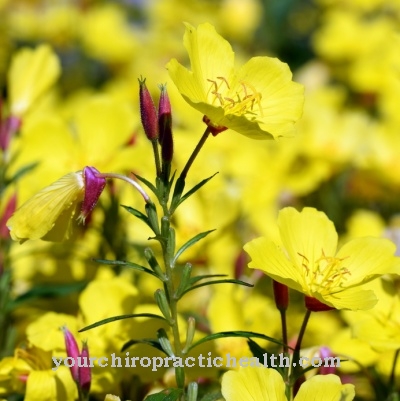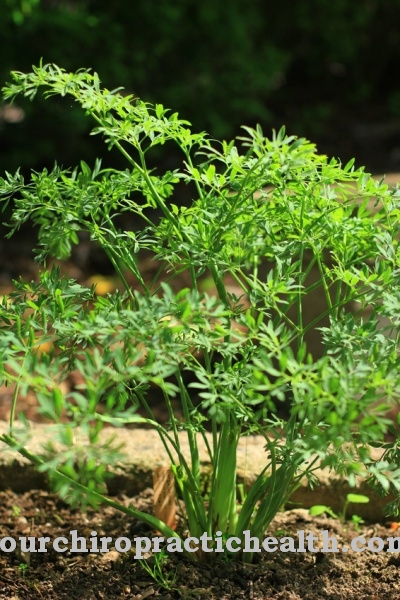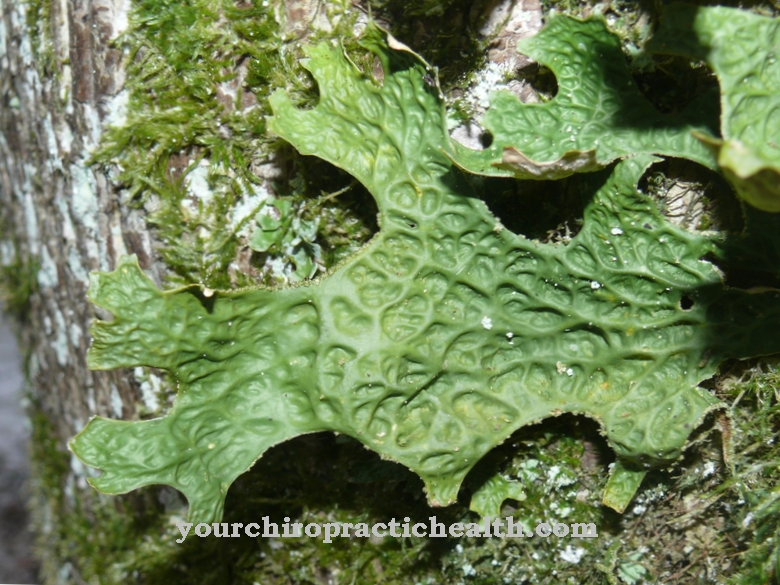The Columbine is a garden plant that comes in many color variations. Their 70 to 75 species grow mainly in the northern hemisphere. Their seeds contain hydrogen cyanide, which makes them slightly toxic.
Occurrence & cultivation of the columbine

It prefers sandy or calcareous soils. It is popularly also under the name Woman glove, Frauenschühli, Jovis flower, Kapuzinerhüttli, Pfaffenkäpple or Venus chariot known. Columbines are perennial plants and bloom for three to five years. Depending on which variety is found, they reach heights of between 30 and 90 centimeters. They form a ramified root system that is difficult to remove once it has expanded. The roots are strong, fleshy and tough. They anchor themselves very firmly in the ground.
The leaves form rosettes and are close together. Smaller leaves grow distributed on the stem. The flowers have a wide range of colors from blue-violet tones to red, money and white. They bloom in April and May. They can bloom again in autumn, provided that the withered flowers are removed. The seeds ripen between July and August and are spread over a larger area by the wind. Wild columbines are under nature protection.
Effect & application of Columbine
The columbine mainly contains cyanogenic glycosides, i.e. hydrogen cyanide, in the seeds, which makes them dangerous if taken carelessly. It should be noted that the consumption of a fresh columbine or even just parts of the plant leads to vomiting, diarrhea, heart problems, drowsiness and nausea. Contact with it can cause skin irritation.
If the plant is carefully dried or heated, its poison becomes ineffective. Then it can be used as a medicinal plant. When dried, the leaves and flowers can be used as tea, which has a diuretic and perspiring effect. This stimulates the metabolism and stimulates the balance of the water balance. It helps against gout, rheumatism and loss of appetite. It can also be used for digestive problems and for blood purification.
For the preparation of the tea, the plant parts should be collected between June and October and then dried. The amount of two teaspoons of the herb is enough for one cup. If it is now brewed with boiling water, the tea can be drunk after ten minutes of steeping time. As an ointment for skin problems or as part of a tincture for washing, the columbine has an astringent effect.
So their active ingredients pull the skin together. With its additional antiseptic, numbing and wound cleansing properties, it accelerates healing. If the skin is infected with parasites, the seeds can be dried and pounded. Applied to the skin, they help fight the parasites.
For the preparation of the tincture, 500 grams of the dried herb are needed. This is put into one liter of 68 percent alcohol. The bottle is then closed and placed in a warm environment for two weeks. After this time, their content can be filtered. 20 drops of the rest of the tincture should be placed on a piece of sugar that is then eaten. If this is repeated every three hours, there will be an improvement.
If there is a lice infestation, the seeds of the columbine can also be used for this. However, since there are other, better and faster acting plants, this application is little known.
Importance for health, treatment & prevention
The columbine has positive effects as a medicinal plant. However, it is rarely used. Other plants have a bigger and faster effect, so in most cases these will be preferred. In the Middle Ages the columbine was mostly used against liver problems such as jaundice.
But it was also used for problems with the bile, skin, stomach and digestion as well as various skin growths such as fistulas, boils, grinds or ulcers. The seeds, leaves, roots and flowers were used to make ointments and tinctures. Hildegard von Bingen recommended the columbine for example against fever and cradle cap. In these cases the leaves should be crushed so that the juice can then be poured into wine. This mixture will lower the temperature with regular use. Another application describes it against problems with the lymph glands, which swell severely and thus cause pain. In this case, leaves should either be eaten as columbine mother tincture or raw in order to allow for regression. When coughing up a lot of mucus, they should also be soaked in honey and then eaten.
The Columbine was also used as an aphrodisiac during this period. In ancient times it was assigned to the fertility goddess Freya, because its flower shape is reminiscent of the Venus chariot. A potion is prepared from the root and the seed, which is said to help against impotence in men. If taken regularly, according to Tabernaemontanus, a 16th century medic, he can resume his marital duties. Here, too, it applies that the columbine should only be used after medical advice and not after independent medication. The hydrocyanic acid it contains makes it quickly toxic and can be life-threatening.
























.jpg)



